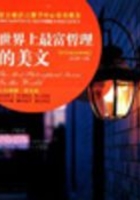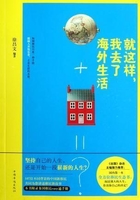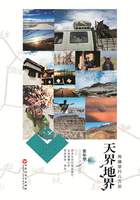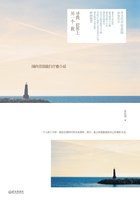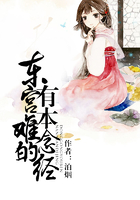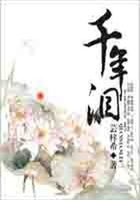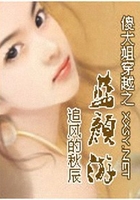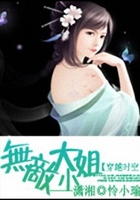中国是世界上最早种桑养蚕、取丝织绸的国家,丝绸之路一直是中国古代最长的陆上国际商路。在古代,通过这条古路中国丝绸大量地运往其他国家。本篇介绍的内容是丝绸的历史、丝绸之路以及绣品和锦品。
1.你能简要介绍中国丝绸生产的历史吗?
What is the history of Chinese silk production?
The cultivation of the silkworm can be traced back to the 3rd century B. C. It was said that Leizu (嫘祖), a legendary figure of prehistoric China, started the planting of mulberry trees and raising of silkworms. According to archeological discoveries, silk and silk fabrics emerged at least 5,500 years ago.
As early as the 4th century B. C., local people in Sichuan Province were able to produce a kind of plain silk cloth called bo (帛); and silk brocade was first produced in Chengdu, Sichuan.
In the Zhou Dynasty, a special administration was set up to manage sericulture and silk production; and from 138 to 126
B. C., Zhang Qian (张骞) carried a diplomatic mission to the west under imperial order along what was called the Silk Road. From that time on, sericulture and silk production techniques gradually spread to many other countries.
Down to the Song Dynasty, the center of silk production gradually shifted to areas south of the Changjian River from areas along the Yellow River; and in the Northern Song Dynasty, the brocade industry advanced into large-scale workshops. During the Ming and Qing dynasties, Suizhou and Hangzhou became important bases for silk production, and many markets and towns were fully engaged in the sake of silk sales.
Notes:1)silkworm桑蚕;2)sericulture养蚕(业);3)bro-cade锦缎
2.你知道有关于丝是怎样发现的传说吗?
Are there any legendary stories related to the discovery of silk?
Legend has it that once there lived a father with his daughter. They had a magic horse, which could not only fly in the sky but also understand human language. One day, the father went out on business and did not come back for quite some time. The daughter promised the horse that if he could bring back her father, she would marry him. Several days later, her father arrived home, riding the horse, but he was unwilling to let his daughter marry a horse and so he killed the innocent animal. Then a miracle happened! The horse’s skin carried the girl up into the sky. They flew and flew away and at last stopped on a tree. The moment the girl touched the tree, she turned into a silkworm. Everyday, she spun out long, thin silk that expressed her feeling of longing for the horse.
Another story says that some ancient Chinese women discovered silk by chance. Once, as they picked fruit from trees, they found a special kind of fruit that was white in color. They tasted it, but it was hard to eat. So they boiled the white fruit in hot water, hoping it might taste better, but it still tasted awful. The women lost their patience and began to beat it with large sticks. Unexpectedly, they discovered silk and silkworms, for the white hard fruit was cocoons!
Notes:1)innocent无罪的;2)cocoon茧
3.桑蚕的作用是什么?
What is the function of the silkworm?
The silkworm is not a worm, but a caterpillar, the larva of a moth. Its diet consists solely of mulberry leaves, and it is native to Northern China. It is called silkworm because it spins its cocoon for raw silk. The cocoon is made of a single continuous thread of raw silk from 300 to 900 meters (1,000 to 3,000 feet) long. If the caterpillar is left to eat its way out of the cocoon naturally, it cuts the threads short, and the silk will be useless. So silkworm cocoons are usuall thrown into boiling water, which kills the larva and makes the cocoons easier to untwist. This operation has continued for thousands of years.
Notes:1)caterpillar毛虫;2)larva幼虫
4.你能简述一下丝绸之路的历史吗?
What is the history of the Silk Road?
The Silk Road originated in the 2nd century B. C. when Emperor Wudi of the Han Dynasty sent Zhang Qian, a court official to the Western Regions to seek allies against Xiongnu (匈奴), a nomadic tribe that frequently raided the border regions of the Han. On his way, the Xiongnu captured Zhang Qian and detained him for ten years. At last, he escaped, and continued his journey to Central Asia. The local rulers, however, had no intention of allying with the Han Empire against Xiongnu. In his trip Zhang Qian collected information about local geology, products and culture of Central Asia, and when he returned to the Han capital, he reported everything to the emperor. In 119
B. C., he made his second trip to the Western Regions, escorted by a caravan of 300 persons. It was this time that silk products were first transported to the other regions.
During the Tang Dynasty, trade was prosperous along the route, but only 30 percent of the trade was silk. Several thousand foreign merchants, students, artists and people of different religious beliefs came to China through the route for friendly exchange and trade in various fields.
After the Tang Dynasty, trade on the route gradually declined as a sea route rose up from the east coast of China. In the late 15th century, many goods and materials were shipped along the sea route. Moreover, the Persians also mastered the art of sericulture, so the import of silk from the East was reduced.
Notes:1)nomadic游牧的;2)detain拘留;3)geology地质学;4)escort陪同
5.请告诉我古丝绸之路的具体路线好吗?
What is the route of the Ancient Silk Road?
The Han Dynasty Silk Road began from the Han capital, Chang’an (长安), the present site of Xi’an (西安). The route took traders westwards into Gansu Province where it passed through Lanzhou (兰州), Tianshui (天水) and Jiuquan (九泉). It advanced along Hexi Corridor (河西走廊) until it reached Jiayuguan (嘉峪关)—the giant barrier of the Great Wall and the first key point of the route:Dunhuang (敦煌).
When the Silk road entered Xinjiang (新疆) from the Hexi Corridor, it broke into three main roads. The southern road ran west along the northern foot of the Kunlun Mountains (昆仑山) and on to Kashgar (喀什噶). It then went over the Pamirs and arrived in India; or it passed through Afghanistan and Russian Central Asia and reached Arabia or the coast of the Mediterranean.
The central road extended west along the southern foot of the Tianshan Mountains (天山) and Aksu (阿克苏). It then crossed the Pamirs and continued on to Mari in Russia.
The northern road went along the northern foot of the Tianshan Mountains and reached the Yili River Valley (伊犁河谷) before it advanced to areas near the Black Sea.


